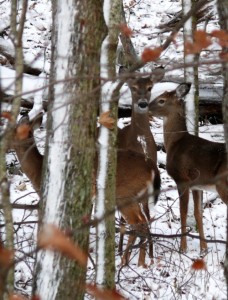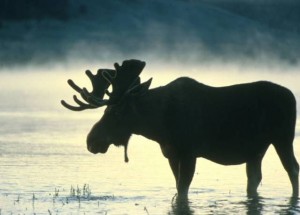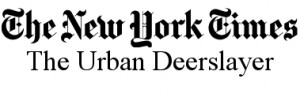 Experts have not yet determined whether Adult-Onset Hunting™ (AOH) is an epidemic. What they do know is that thousands of people are afflicted.
Experts have not yet determined whether Adult-Onset Hunting™ (AOH) is an epidemic. What they do know is that thousands of people are afflicted.
 More than a year ago, it was known—and reported in a widely read New York Times article—that a growing number of U.S. citizens had the condition. According to a recent article in Toronto’s National Post, a number of Canadian citizens have contracted it as well. The geographic epicenter is unknown. Though early reports suggested that AOH is most commonly contracted in cities, recent research indicates that it is even more virulent in rural areas.
More than a year ago, it was known—and reported in a widely read New York Times article—that a growing number of U.S. citizens had the condition. According to a recent article in Toronto’s National Post, a number of Canadian citizens have contracted it as well. The geographic epicenter is unknown. Though early reports suggested that AOH is most commonly contracted in cities, recent research indicates that it is even more virulent in rural areas.
Experts suspect that AOH may have lain dormant in the American psyche for generations, feeding off 19th-century stories about Daniel Boone.
 The most recent outbreak appears to be a mutation, triggered in part by widespread interest in knowing more about one’s food sources than is psychologically healthy. One pathological example often cited by both experts and adult-onset hunters is journalist Michael Pollan’s twin desires to visit cattle feedlots and to shoot a wild pig.
The most recent outbreak appears to be a mutation, triggered in part by widespread interest in knowing more about one’s food sources than is psychologically healthy. One pathological example often cited by both experts and adult-onset hunters is journalist Michael Pollan’s twin desires to visit cattle feedlots and to shoot a wild pig.
When fully developed, the primary symptoms of AOH are unmistakable: an otherwise normal, heretofore-non-hunting adult repeatedly goes to woods, fields, or marshes with a deadly implement in hand, intent on killing a wild animal.
Other potential symptoms include (1) a feeling of connection to nature, to one’s food, and to one’s hunter-gatherer ancestors, and (2) a re-calibration of one’s beliefs about hunting. Previous beliefs may suffer from atrophy, seizures, and even death, especially when an anti-hunter contracts AOH.
Knowing the early warning signs may protect you or a loved one from the worst effects. These early signs include:
- Excessive reading about the production of industrial food, especially factory meat.
- Esophageal spasms upon learning that the average pound of supermarket ground chuck contains meat from several dozen animals slaughtered in five different states.
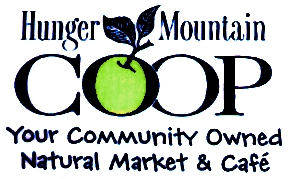 Sudden bouts of wondering why the local food co-op—with its cooler full of local, organic, free-range meats—doesn’t sell hunting licenses.
Sudden bouts of wondering why the local food co-op—with its cooler full of local, organic, free-range meats—doesn’t sell hunting licenses.- Compulsive eating of “real food” purchased directly from farmers.
- Recurrent realizations that farmers are killing deer and woodchucks to keep organic greens on your plate.
- Impaired ability to find meaning in chicken nuggets or tofu dogs.
- Insistence on a literal reading of Woody Allen’s dictum “Nature is like an enormous restaurant.”
- An uncharacteristic compulsion to initiate dinner conversation about firearms.
- Impaired ability to see humans as separate from the rest of nature.
- Repeated contact with real, live hunters (experts suspect that AOH is highly contagious, though transmission mechanisms are not yet fully understood).
Early diagnosis is problematic, as other potential warning signs include interests in hiking, gardening, fishing, mushroom hunting, raising chickens, cooking, and eating. Even vegetarianism can be a precursor condition, particularly if your acupuncturist has recommended that you add animal protein to your diet.
Alarmingly, growing up in a non-hunting or anti-hunting family does not guarantee immunity.
Experts have begun searching for a genetic marker indicating a predisposition for AOH. Until an accurate test is available, researchers recommend following these guidelines:
- If you or someone you know exhibits 0-3 of the above signs, the risk of adult-onset hunting may be low. You are urged to watch for further symptoms.
- If 4-6 of the above signs are present, immediate action is required to prevent a full-blown case of AOH. Recommended precautions include (A) obstinate refusal to think about where one’s food comes from, especially any meat consumed, and (B) at least one-half hour per day of reading about how humans are, in fact, extraterrestrials.
- If 7-10 of the above signs are exhibited, adult-onset hunting is already entrenched. Primary symptoms will begin to appear in a matter of weeks. Sign up for a hunter education course as soon as possible and find a hunter willing to show you the ropes.
There is no known cure.
© 2011 Tovar Cerulli

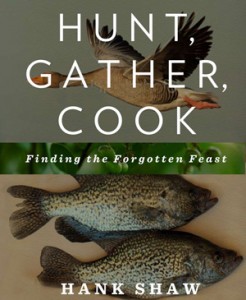
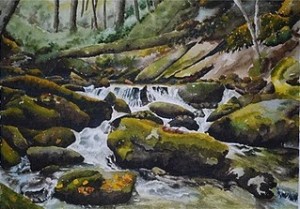
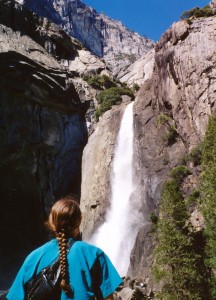 “Words of wisdom for vegans from hunters” – Hmmm. Unlike most of the other Googlers above, you might actually have come to the right place.
“Words of wisdom for vegans from hunters” – Hmmm. Unlike most of the other Googlers above, you might actually have come to the right place.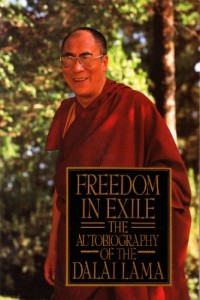
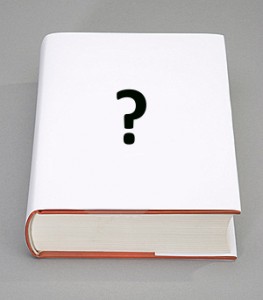 Two years ago, it was small.
Two years ago, it was small.
